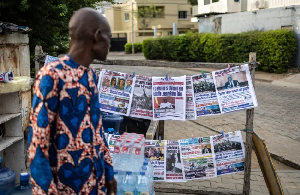Despite the uncertainty regarding price developments for the rest of the year, the Bank of Ghana (BoG) latest forecast on inflation shows that inflation would gradually ease towards the central target band of 8±2 percent by the first half of 2017.
This is unchanged from its March forecast.
According to the Central Bank’s Monetary Policy Report, the disinflation in the forecast horizon is to be largely driven by stable exchange rate, continued fiscal consolidation, improvements in growth conditions, continued improvement in electricity supply, and no unanticipated hikes in administered prices.
“These underlying assumptions, together with the tight monetary policy stance are expected to bring inflation back within the target corridor by mid-2017, barring further risks”, it explained.
In the unlikely situation that the exchange rate, fiscal policy, growth conditions and one-off shocks in the prices of petroleum and utilities deviate significantly from the baseline assumptions, the regulator said further monetary policy action will be required to counter possible heightening of inflation expectations and worsening of the medium-term inflation outlook.
According to the Central Bank, price developments in the first-four months of the year were broadly in line with its earlier forecasts that inflation would peak in the first quarter of 2016 and, thereafter, decline gradually over the forecast horizon.
The May forecast by BoG reinforced the earlier forecasts which showed that inflation would gradually decline from the second quarter towards the target band by mid-2017, barring any unanticipated shocks.
The expected disinflation process the Central Bank said is envisioned to be supported by continued monetary policy tightness, keeping on track fiscal consolidation, continued stability in the local currency, gradual improvement in the macro fundamentals, leading to lower of inflation expectations.
However, there are however risks to the inflation outlook. These included unanticipated upward adjustments in utility tariffs and domestic prices of petroleum products as well as possible second round effects from such adjustments on prices. The slow but persistent pickup in food inflation, since August 2014, was also a source of concern for inflation.
Annual inflation in Ghana increased to 18.9 percent in May 2016 from 18.7 percent recorded in April 2016, according to the Ghana Statistical Service. This was mostly due to a 5.0 percent jump in cost of fuel early in the month.
Food as well as housing and utilities were other main drivers of the rise. On a monthly basis, consumer prices went up 1.1 percent, following a 1.4 percent rise in the preceding month.
Business News of Thursday, 14 July 2016
Source: thefinderonline.com













